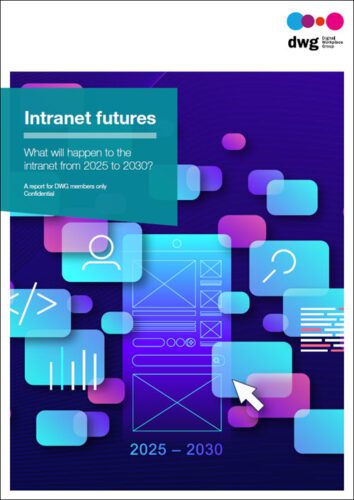12 key concepts behind digital workplace success
Synopsis: How do you define and manage the digital workplace? What is the role of the intranet and the intranet team? This compendium includes 12 key concepts to answer those questions. Are you ready?
In this, the last of my series of blog posts, I’m going to look back at what we’ve covered and also tackle that tricky question for intranet managers: When is the right time to try and manage the whole enchilada of the digital workplace? Or, if you are in the trenches of intranet management being shot at on a daily basis, should you just concentrate on Mission One?
I started out by dispelling some myths:
1. What is the digital workplace anyway?
The digital workplace isn’t a fantastical bit of science fiction. It is here, now and messy. It is all of the tools the organization provides that people use to do their jobs.
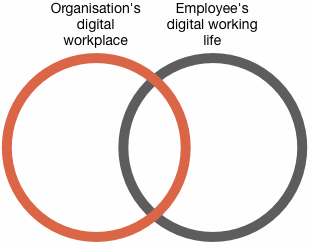
2. Why do organizations ignore the digital workplace?
It’s all moved a bit fast and we are waiting for our organizations to catch up.
[one_half]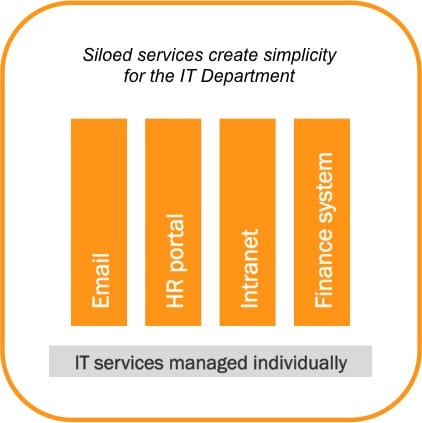 [/one_half][one_half_last]
[/one_half][one_half_last]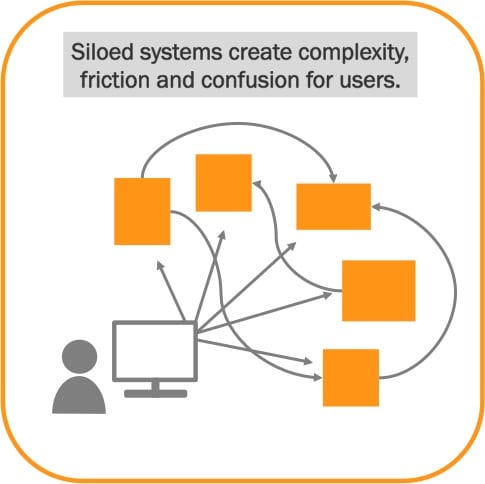 [/one_half_last]
[/one_half_last]
3. Why is the intranet still important in the era of the digital workplace?
Hell, yeah. It brings structure and coherence. When you think about the intranet, think gaffer-tape, crazy glue and Swiss Army knives.
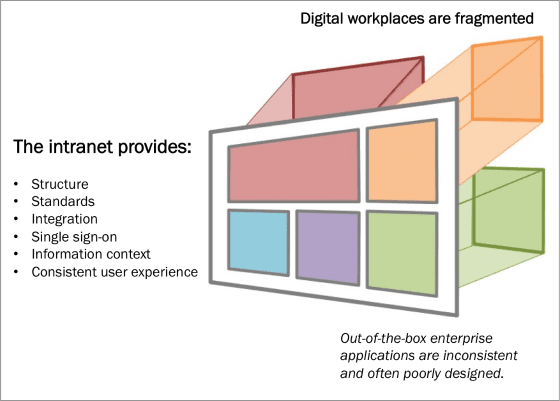
4. Should the intranet team manage the digital workplace?
Maybe not “manage” in the way IT thinks of managing, but intranet teams have some super-powers that are going to come in useful in the final reel:
- standards, controls and governance
- managing complexity, providing structure and coherence
- representing the user
- balancing technology with purpose.
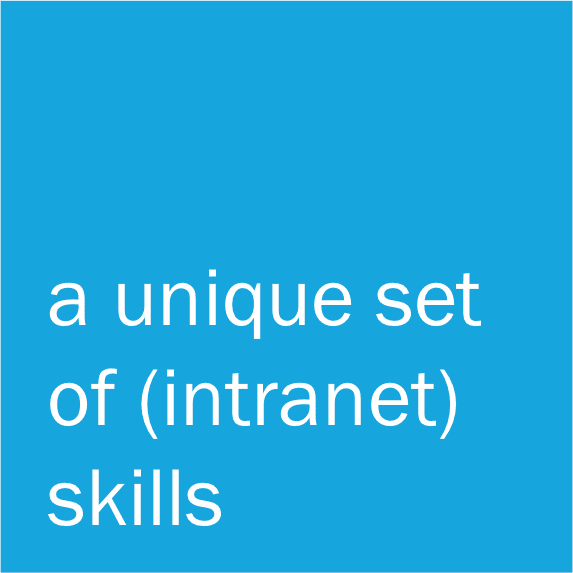
5. What’s different between intranet management and digital workplace management?
We need to think beyond the idea of the homepage and “out of the bowser” and think about the users’ context and how they might use all these devices. I made this funky GIF:

6. What’s the employee’s view of the digital workplace?
This is where we got a bit conceptual, because the organization’s digital workplace is not the whole of an employee’s digital life. I deployed the heavy weaponry of Venn diagrams at you:
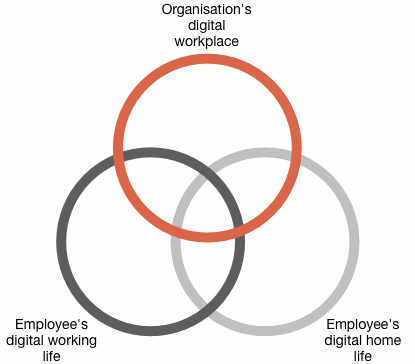
7. Enterprise mobility or mobile intranet?
We looked at “mobile” and it turned out to be a bit more complicated than just making your intranet available on a device. We need to think about the various constraints of mobile from the user’s point of view: digital constraints, physical constraints and social constraints.
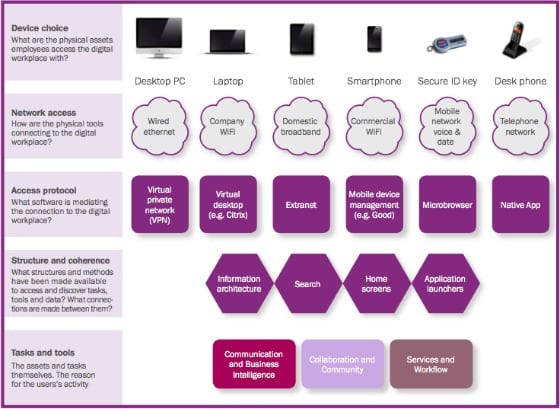
8. Millennial schmillennial: debunking myths about generational digital working habits
Is the world different now that kids were born with a SNES and grew up with YouTube? Uh, no. You need to research your users, who rely on hooky headlines. Observe, design and test, and don’t rely on stereotypes beyond your ability to make and craft changes in the systems of the digital workplace.
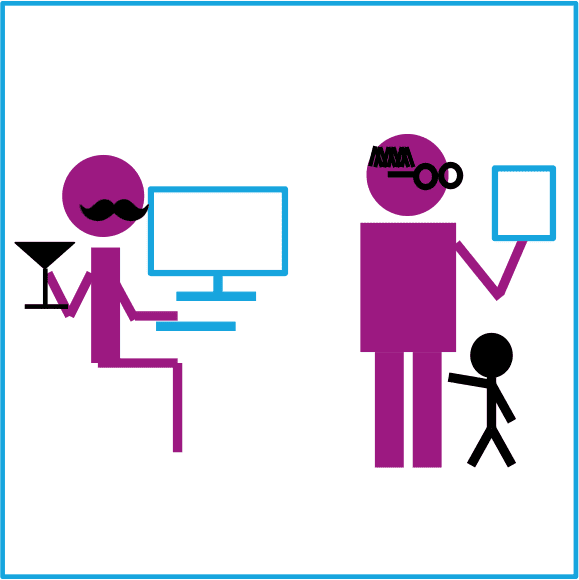
9. Will the digital workplace evolve like the intranet did? I hope not
The evolution of intranets has been unusually tortuous. The “wild west” of chaotic, unmanaged intranet sites does not have to be replicated in the evolution of digital workplaces:

The size and scope of the legacy of digital workplaces mean we need to take a more concerted but practical approach:

10. With the digital workplace, focus is everything
Don’t try and change it all in one go. Scope your project around something that will really make a difference strategically:
- by technology
- by business area
- by business process
- by behaviours.
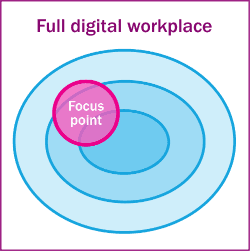
11. Segmenting the users of the digital workplace
Trying a one-size-fits-all approach for your users won’t make anyone happy. Having a clear understanding of the characteristics of different types of user (called segmentation) is one small step, but creating personas – fictional pen portraits of someone in a segment – helps you keep the user in the room, making it easier to take decisions and harder to design for yourself or your boss.

12. How user experience debt bankrupts your digital workplace
This is worse than credit card debt. When you don’t go the extra mile for your digital workplace project, you can end up making work for the whole organization. Your project might finish on time and under budget, but you will have passed the extra time and unhappiness on to your users. Avoid this and strive to go that little bit further.

So we come to the end, and the beginning:
So, dear intranet manager, you stand at a crossroads. The world is moving pretty fast and it is mixing everything up. On the one hand, a great many organizations are not really coping with what they need to provide with their intranets. Content management is still a mess; strategy and governance is a movie without a director; and search and metrics are often disaster areas. The intranet needs good people like you, to guide, build and structure the future. Social and collaboration are changing intranets and being successfully absorbed under your watchful guidance.
But on the other hand, the concept of the “intranet” (meaning “our stuff in the browser”) is getting very fuzzy, and much of what is available in the browser is also available outside it, via apps and other clients on the desktop. At the same time, activities like “collaboration”, of virtually any stripe, veer across different tools in the digital workplace, sometimes being browser-based but increasingly not. Consider Microsoft Lync: technology that has a toehold in the browser, with ways to integrate people’s statuses, and yet it is a desktop client and a mobile client. If you restrict your influence and your strategy and governance to “in the browser”, you could not only be missing a trick, you could miss the boat entirely.
In summary, I suggest it is down to the maturity of your organization. High-performing organizations are able to tear down barriers because they have evolved their ideas. Organizations that lag behind probably need the structure in place so that everything doesn’t just fall apart.
And how about you, intranet manager? No, not the role, actually you! Where are you in your career? Are you happy keeping the intranet tidy and making it as good as it can be? Or do you want to move on up towards bigger, but perhaps scarier, things? Maybe you can, if the opportunity presents itself, but even in your new role you will continue to understand what is important, unique and essential about the intranet – the prince among systems dressed as a pauper.
I don’t envy you that choice. But, as the great Yogi Berra once said, “When you see a fork in the road: take it.”
Related research reports
[one_half]
Digital Workplace User Experience

Designing for a flexible workforce
[/one_half][one_half_last]
Digital Workplace Fundamentals
The integrated approach
[/one_half_last]
Categorised in: Digital workplace

